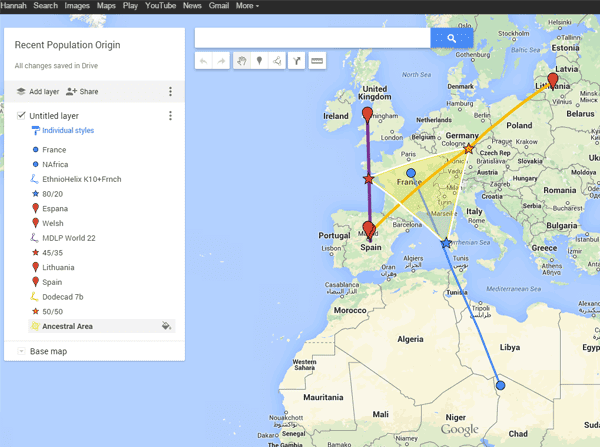Ironically in this case the infidelity was entirely well known to the family. What no one ever seems to discuss is the time gaps between children and the fact that only half or less look related to each other. Something more strange is the appearance of a unique firstname for the youngest child. While the story is that the mother chose it because she admired a foreigner her brother had dated once I find that a bit odd. To add flame to this fire in researching the origin of the name I discovered that it is actually of Portuguese origin despite the Italian spelling.
So how does one really confirm a highly likely NPE? I seem to have two avenues, one to compare the male line of my great grandmother's three brothers. This could be supplemented with their sons tests but of course that means a confirmation for a non paternity could also be a illegitimacy in that younger generation. The other would be to compare the autosomnal records of the sister's children for glaring different builds. No one of course wants to confirm a non paternity for the family who raised them and who they believe is apart of their personal identity. In that sense I would require either a science and truth driven youngblood like myself or one of the closer generations who doesn't care. As of yet I have not located either.
I imagine if I was local and a bit more skilled at hard copy research I could probably discover names and dates for the unfaithful spouse after the separation. It is likely that the man who took her in as a live-in maid was also her lover. Perhaps he was Portuguese?



.jpg)
